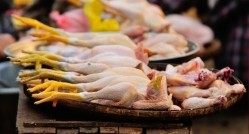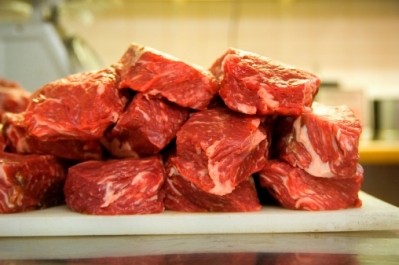Meat demand rises in Myanmar

Almost 90% of Myanmar’s population are Buddhist and almost a third live below the poverty line, factors which have historically kept meat consumption levels low. Also, Myanmar consumers have tended to shy away from red meat because buffalos – a key livestock segment - are used to plough the fields and it is considered inauspicious to eat animals that provide livelihoods. However a strengthening economy and a boom in tourism is fuelling meat consumption.
Very few commercial cattle farms exist in Myanmar and the government restricts slaughtering cows under the age of 16 - one reason is that they are valued as animals used for haulage on farms, noted a research paper from Australia’s University of Queensland.
However, Sabrina Yin Foung May, ASEAN [Association of Southeast Asian Nations] director of the US Meat Export Federation said she thought these cultural and religious barriers could be overcome: “The type of Buddhism practiced in Myanmar is similar to Thailand’s – meat consumption at certain times is more or less permissible, so I am not worried about religious restrictions,” she said.
Lack of transparency
Myanmar is the smallest market in which the federation operates, but foreign investment is driving up consumption rates of high quality meat products. “Beef itself is a very niche category – partly because of higher pricing,” said the US federation’s director, adding that US beef also struggles for sales as it is most often grain-fed and hence more expensive than competing New Zealand and Australia supply grass-fed meat.
“US beef has a different price point because of the higher cost of producing grain,” she said. “It will take more time for buyers in Myanmar to get used to the price and have an understanding about the quality ...” However, she emphasised that the quality was “different” rather than superior to grass-fed beef.
An import protocol for meat was established between the US and Myanmar in 2014. However, the federation director said the most challenging aspect of doing business with Myanmar was the lack of regulatory transparency. “The US Embassy has been able to establish a dialogue with local authorities. That is encouraging because it means Myanmar is keen to open up its market.”
More quality meat
Freddie Fuan, of Singapore-based Royal Fresh Singapore, which manufactures processed chicken among other items and wants to export to Myanmar, attended the Food and Hotel Myanmar expo in Yangon last week after receiving emails from hotels and restaurants seeking suppliers.
He told GlobalMeatNews: “The logistics for processed food in Myanmar isn’t easy. There’s not many cold chain suppliers so we’ll have to consider providing our own cold chain storage facilities.” But Fuan said he was pleasantly “shocked” to discover selling prices at restaurants. “It’s the same price as Malaysia. That makes it a more appealing market because we manufacture in Thailand so our costs can be competitive.”
“There is more demand for meat – and for quality meat,” said Renato Buhlmann, the managing director of Singapore Myanmar Investco (SMI) F&B (food and beverage). “The greatest demand is still for chicken and pork.”
Some of SMI’s products, such as its Prime Cut Sausages brand, are manufactured in Myanmar, which posed certain challenges, he said. “Labour costs are low but creeping up ... You have to pay a lot to keep key staff because there’s a lot of new companies here now.”














